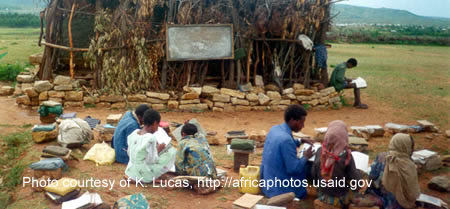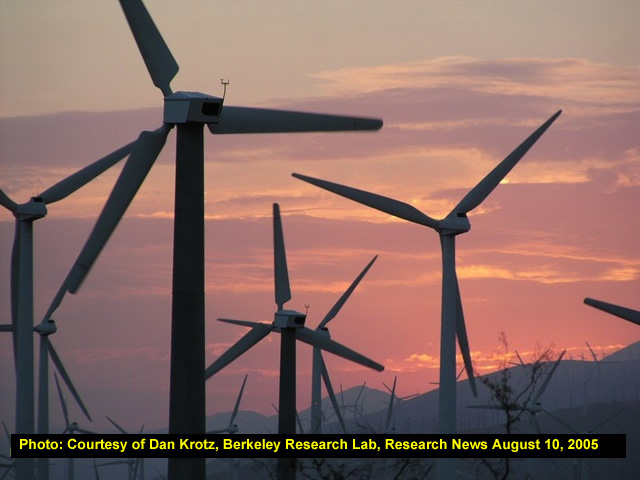Infrastructure Challenges

Overview
Integrating computers into African school systems and all that it entails has been modeled by an African NGO, SchoolNet Africa. In their 2003 report, SchoolNet Africa approximates the cost of introducing a computer infrastructure into a school system in Namibia. The total cost is over three million US dollars [14]. Aside from cost, there are other serious challenges.

Building Schools
Over 85% of Ethiopia’s population lives in rural communities [15]. Some of these communities are today not reachable by paved roads. This makes building schools to support the children in these communities difficult at best. Ethiopia must spend some of their Millennium Development Goal funding to creating roads that can access these communities and build schools.
Training Teachers
Efforts are already underway to teach new technology to Ethiopian teachers. Organizations like the New Partnership for African Development (NEPAD), SchoolNet Africa, United Nations Educational Scientific and Cultural Organization (UNESCO), Addis Ababa Universities E-learning-Africa initiative, Stockholm Challenge Entoto & MENELIK II ICT club initiatives [16], USAID-Ethiopia [17], and others are all doing their best to get tomorrows teachers in Ethiopia conversant in today’s technology.

Electricity
Electricity in rural Ethiopia is almost non-existent. Developing an infrastructure in Ethiopia was always secondary to fighting regional conflicts and feeding the population. Urban areas in Ethiopia lack sufficient stable power. Taking into consideration that Ethiopia imports all of its petroleum and coal products the idea of building traditional power generation plants is unsustainable. Alternatives would include so called “green” solutions which would help Ethiopia in achieving other Millennium Development Goals, with Millennium Development Goal funding.
One of the “green” solutions is wind farms. Wind farms were one of the topics discussed at a 2001 meeting at Addis Ababa University. In 2000, Morocco had a wind farm installed at a cost of $63 million U.S. dollars and its energy output is 50 MW [18]. It would only take 40 such wind farms strategically placed around the country to equal the total current power generation of the entire country. Ethiopia could to do smaller scale wind farms that could be more effective in providing power to rural schools and communities. This solution would be both efficient and effective because it would not increase an annual burden on Ethiopia’s GDP and it would be partially funded by the World Bank.
Telecommunications
Ethiopia ranks last in many telecommunications ratings according to the 2006-2007 GITR report [7]. In 2005, Ethiopia got its first taste of broadband when it leased a satellite feed through Hughes Network Systems who partnered in the project with Ethiopian Telecommunications (ETC). The idea was simple. Instead of running cables to all the rural schools throughout the country just purchase satellite antennas, a down converter for every school and you’re done [19]. The project cost $800,000 U.S. for initial startup costs and a fee of $35,000 U.S. per month. Over the life of the project, most connection speeds when operational were around 33 Kbps, a far cry from the 1.125 Mbps they were promised. On top of that the connections were unreliable at best.
Ethiopia has now signed on to the East Africa Submarine Cable System which is project that will run fiber-optic cables in a ring around Africa, landing in eight coastal countries. The eleven landlocked countries that signed up for this project would receive their Internet feed from one or more of the eight coastal countries. In Ethiopia’s case it receives an Internet feed, via fiber, from Sudan [20, 21]. The interconnectivity was completed in February 2007. To date there are 78 Ethiopian towns or villages connected to this network all getting better than 1 Mbps feeds.



